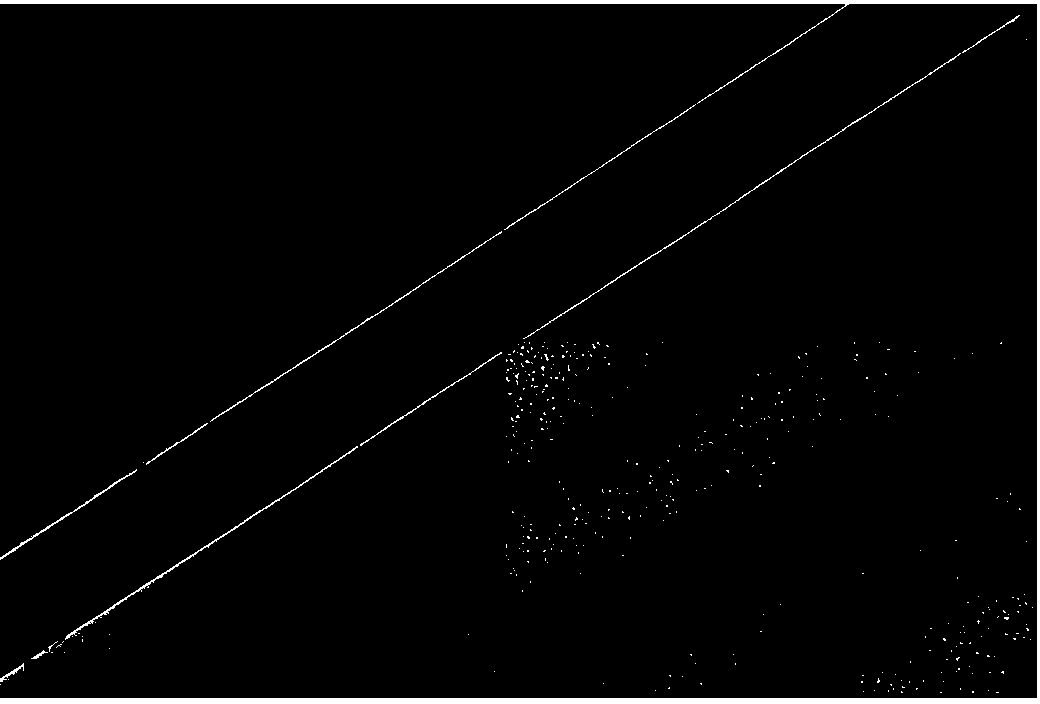Preparation method for porous inorganic photocatalytic composite nanometer fiber
A composite nanofiber and photocatalytic technology, applied in chemical instruments and methods, fiber treatment, catalyst carrier, etc., can solve the problems of poor reusability, difficulty in recycling, loss, etc., and achieve the effect of solving photocorrosion and maintaining photocatalytic activity
- Summary
- Abstract
- Description
- Claims
- Application Information
AI Technical Summary
Problems solved by technology
Method used
Image
Examples
Embodiment 1
[0033] At room temperature, stir and dissolve 5.00g PAN, 0.50g tetraethyl orthosilicate in 15mL N,N-dimethylformamide solution, this solution is used as the outer layer solution; similarly, with 4.0g PEO, 0.50g titanic acid Ethyl ester was stirred in 15 mL of N,N-dimethylformamide solvent until the solid was completely dissolved, and this solution was used as the inner layer solution. Input the configured coaxial electrospinning solution to the outer layer and inner layer of the coaxial needle at the flow rate of 0.015mL / min and 0.010mL / min respectively, and connect the coaxial needle to the 18Kv high-voltage electrostatic generator at the same time, with tin foil The fiber is accepted, and the acceptance distance is 15 cm to obtain the composite nanofiber. After the composite nanofibers are dried, the composite nanofibers are heated from room temperature at 10 °C / min to 450 °C for 1 h in the nitrogen atmosphere of the muffle furnace, and then naturally cooled to room temperat...
Embodiment 2
[0035]At room temperature, dissolve 6.0g PVP and 2.0g propyl orthosilicate in 15mL absolute ethanol, stir until the solid is completely dissolved, and use this solution as the outer layer solution; Esters in 15mL of absolute ethanol, the solution as the inner layer solution. Input the configured coaxial electrospinning solution to the outer layer and inner layer of the coaxial needle at the flow rate of 0.02mL / min and 0.02mL / min respectively, and connect the coaxial needle to a 20Kv high-voltage electrostatic generator at the same time, with tin foil The fiber is accepted, and the acceptance distance is 10 cm, and the composite nanofiber is obtained. After the composite nanofibers were dried, the temperature was raised from room temperature at 10 °C / min to 400 °C for 2 h in a nitrogen atmosphere of a muffle furnace, and then naturally cooled to room temperature to obtain porous inorganic photocatalytic composite nanofibers.
Embodiment 3
[0037] Dissolve 8.5g of PEO, 4.0g of butyl orthosilicate in 15mL of N,N-dimethylformamide / ethanol (v / v = 1:1) at room temperature, stir until the solid is completely dissolved, and use this solution as layer solution; similarly, mix 11.0g PVP, 4.5g tetrabutyl titanate in 15mL N,N-dimethylformamide / ethanol (v / v = 1:1), stir until the solid is completely dissolved, and this solution is used as the inner layer solution. Input the configured coaxial electrospinning solution to the outer layer and inner layer of the coaxial needle at the flow rate of 0.008mL / min and 0.005mL / min respectively, and connect the coaxial needle to a 25Kv high-voltage electrostatic generator at the same time, with tin foil The fiber is accepted, and the acceptance distance is 10 cm, and the composite nanofiber is obtained. After the composite nanofibers were dried, the composite nanofibers were heated from room temperature to 350 °C at a rate of 10 °C / min for 3 h in the nitrogen atmosphere of the muffle ...
PUM
 Login to View More
Login to View More Abstract
Description
Claims
Application Information
 Login to View More
Login to View More - R&D
- Intellectual Property
- Life Sciences
- Materials
- Tech Scout
- Unparalleled Data Quality
- Higher Quality Content
- 60% Fewer Hallucinations
Browse by: Latest US Patents, China's latest patents, Technical Efficacy Thesaurus, Application Domain, Technology Topic, Popular Technical Reports.
© 2025 PatSnap. All rights reserved.Legal|Privacy policy|Modern Slavery Act Transparency Statement|Sitemap|About US| Contact US: help@patsnap.com


